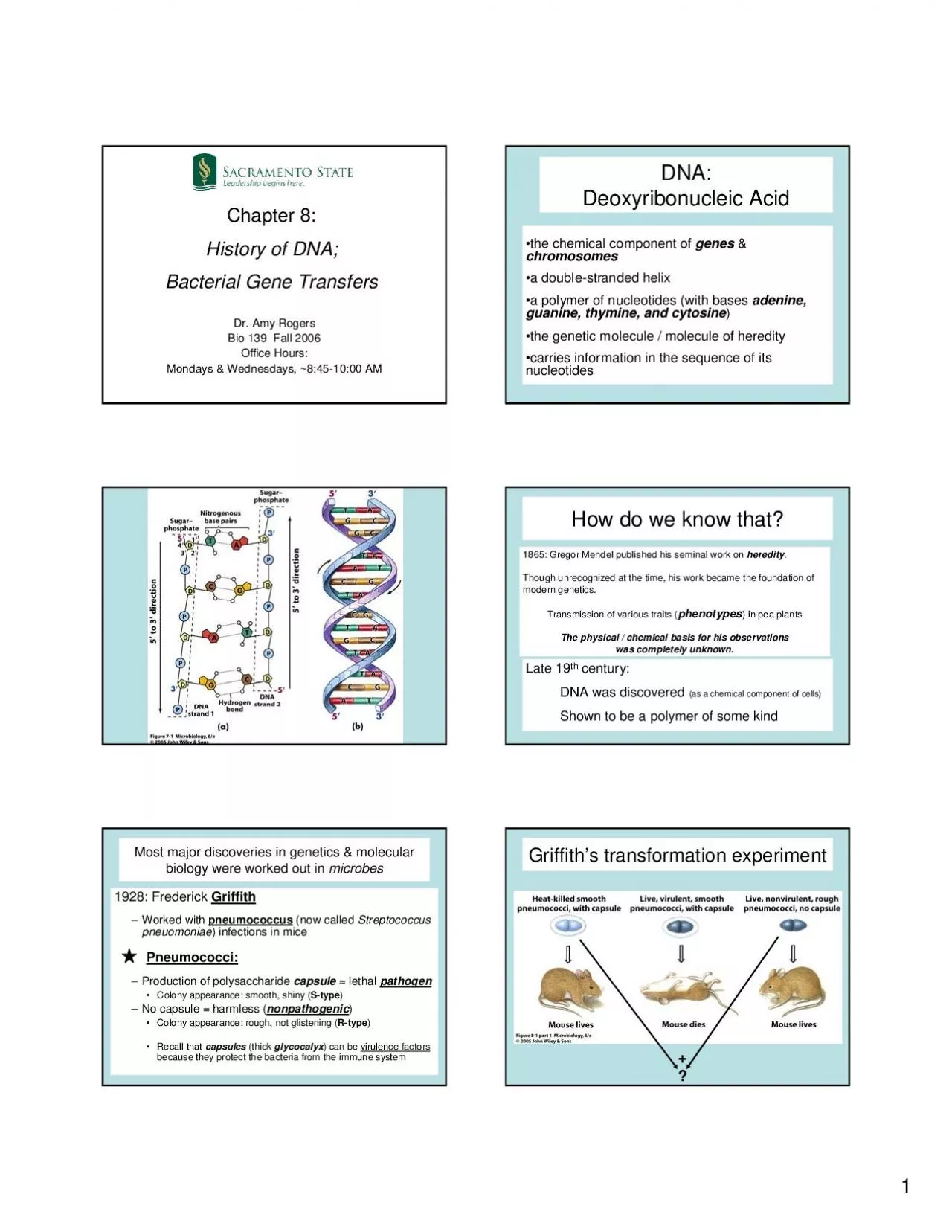

1865 GregorMendel published his seminal work on heredityThough unrecognized at the time his work became the foundation of modern geneticsTransmission of various traits phenotypes in pea plantsThe ID: 960113
Download Pdf The PPT/PDF document "the chemical component of genesa doubles..." is the property of its rightful owner. Permission is granted to download and print the materials on this web site for personal, non-commercial use only, and to display it on your personal computer provided you do not modify the materials and that you retain all copyright notices contained in the materials. By downloading content from our website, you accept the terms of this agreement.
the chemical component of genesa double-stranded helixa polymer of nucleotides (with bases adenine, guanine, thymine, and cytosinethe genetic molecule / molecule of hereditycarries information in the sequence of its nucleotides 1865: GregorMendel published his seminal work on heredityThough unrecognized at the time, his work became the foundation of modern genetics.Transmission of various traits (phenotypes) in pea plan
tsThe physical / chemical basis for his observations Production of polysaccharide capsule= lethal pathogen Colony appearance: smooth, shiny (S-type Griffiths transformation experiment +? 3 RED = radioactive Hershey-Chase expt 1.Radiolabel virus2.Infect cells (genetic material enters cells)3.Use blender to shear off empty virus coats4.Look at infected cells: radioactive, or not? 35 The genetic material contains P, not S,
therefore it is DNA (not protein) James Watson & Francis Crick 1953: proposed a structure for DNA Double helixWatson-Crick base pairing: A with T; G with CThe model could explain how DNA serves as the information carrying molecule of heredity I highly recommendThe Eighth Day of Creation by Horace Freeland JudsonFirst published 1979 Simon & Schuster X ray diffraction pattern of DNA suggesting repeating helical structu
re Want to know fascinating stories behind the discoveries?Also: The Double Helix by J. WatsonRosalind Franklin: Dark Lady of DNA by Brenda Maddox Moving DNA from one organism to another Vertical gene transfer : from parent to offspringBacteria : asexual reproduction, by binary fissionOffspring inherit exact same DNA parent hadHigher organisms: sexual reproductionDNA ofoffspring differs from the DNA of either parentLate
ral (horizontal) gene transfer Bacteria give each other DNA in processes that are unrelated to reproductionGreatly increases genetic diversity of bacterial populations(which would otherwise rely solely on mutation to diversity) Lateral Gene Transfer #1:Transformation Griffiths pneumococciMechanism:Donor cell Dead cell lyses and releases nakedDNA into environment and incorporates itRecipient must be competent DNA i
s incorporated by recombination replacingan existing bit of chromosome) offspring. Transformation Bacterial Transformation Competence What makes a cell competent?DNA has to get intothe cellDNA must be broken into fragments small enough to enter, but not degradedall the way to nucleotides (nuclease enzymes)Recombinationmust be possibleAppropriate enzymes to splice out old DNA and insert new DNA (DNA strand breaking & ligat